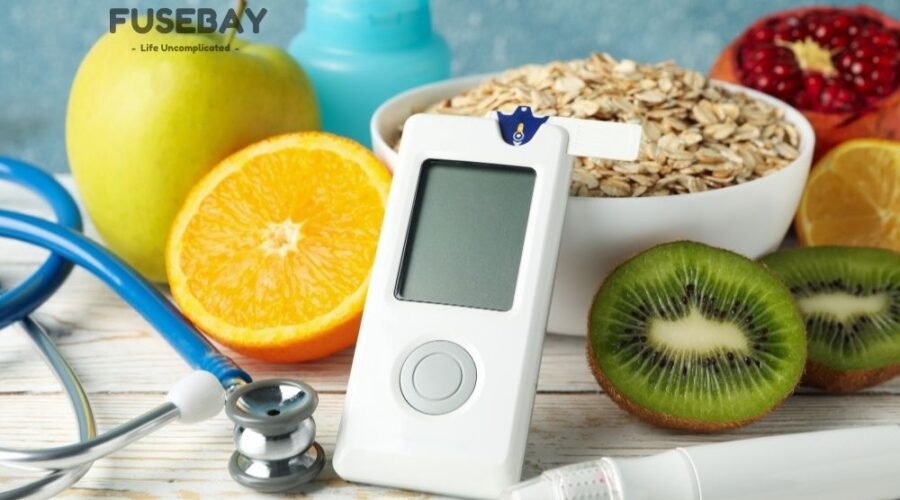Simple Tips to Learn How to Control Diabetes Naturally?
How to Control Diabetes Naturally: Diabetes is a growing global health concern, affecting millions of people every year. While medications and insulin therapy are often essential, understanding how to control diabetes naturally offers a proactive approach to managing the condition effectively. Natural methods focus on improving lifestyle choices, dietary habits, and physical activity to maintain healthy blood sugar levels without relying solely on medication. These strategies not only help prevent complications but also improve overall quality of life. In this guide, we delve into actionable, science-backed techniques to naturally manage diabetes and achieve better health outcomes. Understanding Diabetes: A Quick Overview Diabetes is a condition characterized by high blood sugar levels due to inadequate insulin production or inefficient use of insulin. There are essentially three kinds of diabetes: Managing diabetes naturally focuses on lifestyle strategies that help the body maintain healthy blood sugar levels. 1. Adopt a Balanced, Nutrient-Dense Diet A well-planned diet is one of the most powerful tools for managing diabetes. Focus on consuming whole, unprocessed foods that support stable blood sugar levels. Key Dietary Guidelines Foods to Avoid 2. Engage in Regular Physical Activity Exercise is not only vital for overall health but also plays a critical role in managing diabetes. Physical activity helps your muscles use glucose for energy, reducing blood sugar levels and improving insulin sensitivity. Types of Exercises for Diabetes Consistency is crucial—find activities you enjoy to maintain a regular exercise routine. 3. Manage Stress with Mind-Body Techniques Stress has a direct impact on blood sugar levels, often causing spikes due to the release of stress hormones like cortisol. Managing stress is critical for effective diabetes control. Stress-Reduction Practices 4. Stay Hydrated Proper hydration is an often overlooked aspect of diabetes management. Water helps the kidneys eliminate excess sugar through urine and prevents dehydration, a common issue in diabetes. Hydration Tips 5. Focus on Weight Management Carrying excess weight, particularly around the abdomen, increases insulin resistance and makes diabetes management more challenging. Losing even a small amount of weight can lead to significant improvements in blood sugar levels. Weight Management Strategies 6. Explore Natural Supplements Several natural supplements can support blood sugar management. While not a replacement for prescribed medication, they can be beneficial when used appropriately. Common Supplements for Diabetes Continuously counsel a medical services supplier before adding enhancements to your daily practice. 6. Get Sufficient Sleep Poor sleep can interfere with blood sugar regulation and increase insulin resistance. Establishing a consistent sleep routine is vital for managing diabetes naturally. Sleep Hygiene Tips 7. Avoid Smoking and Limit Alcohol Both smoking and excessive alcohol consumption can worsen diabetes and increase the risk of complications like heart disease, nerve damage, and poor circulation. Why Avoid Smoking? 9. Regularly Monitor Blood Sugar Levels Self-monitoring is an essential part of diabetes management. It helps identify patterns and triggers, allowing for informed decisions about diet, activity, and medication. Monitoring Tips 10. Stay Consistent with Your Plan Consistency is the foundation of successful diabetes management. Building habits takes time, but persistence leads to lasting change. Tips for Staying Consistent Remember, progress is a journey, not a race. Each small step you take brings you closer to better health. Conclusion: In conclusion, learning how to control diabetes naturally is a transformative approach that empowers individuals to manage their condition effectively. Adopting a balanced diet, staying active, managing stress, and maintaining healthy lifestyle habits can significantly improve your blood sugar levels and overall health. Consistency in these efforts is key to long-term success. Natural strategies not only complement medical treatments but also enhance overall well-being. Always consult with a healthcare provider to create a personalized plan for managing diabetes. Embracing these changes can lead to a healthier and more fulfilling life. Discover amazing information and unique finds on FuseBay! Don’t miss out—visit our website for exclusive articles and top-notch blogs tailored just for you! FAQs About How to Control Diabetes Naturally 1. Can diabetes be completely cured through natural methods? No, diabetes cannot be completely cured, but it can be effectively managed. Natural methods such as a balanced diet, regular exercise, stress management, and healthy lifestyle habits can significantly improve blood sugar control and reduce dependency on medications. 2. What foods should I avoid to control diabetes naturally? To manage diabetes, avoid sugary beverages, desserts, processed snacks, refined carbohydrates like white bread and pasta, and trans fats found in fried and packaged foods. Instead, focus on whole, nutrient-dense, and low-glycemic foods to stabilize blood sugar levels. 3. How does exercise help in managing diabetes naturally? The practice further develops insulin awareness, permitting your body to utilize glucose more. It also helps lower blood sugar levels, promotes weight loss, and reduces the risk of complications. Activities like walking, strength training, and yoga are particularly beneficial for individuals with diabetes. 4. Are natural supplements like cinnamon or bitter melon effective for diabetes? Some natural supplements, such as cinnamon, fenugreek, and bitter melon, may help improve insulin sensitivity and reduce blood sugar levels. However, their effects vary among individuals, and they should not replace prescribed medications. 5. How important is stress management in controlling diabetes naturally? Stress can significantly impact blood sugar levels by triggering the release of hormones like cortisol, which raises glucose levels. Effective stress management techniques such as meditation, deep breathing, and yoga are crucial for maintaining stable blood sugar and overall health.












